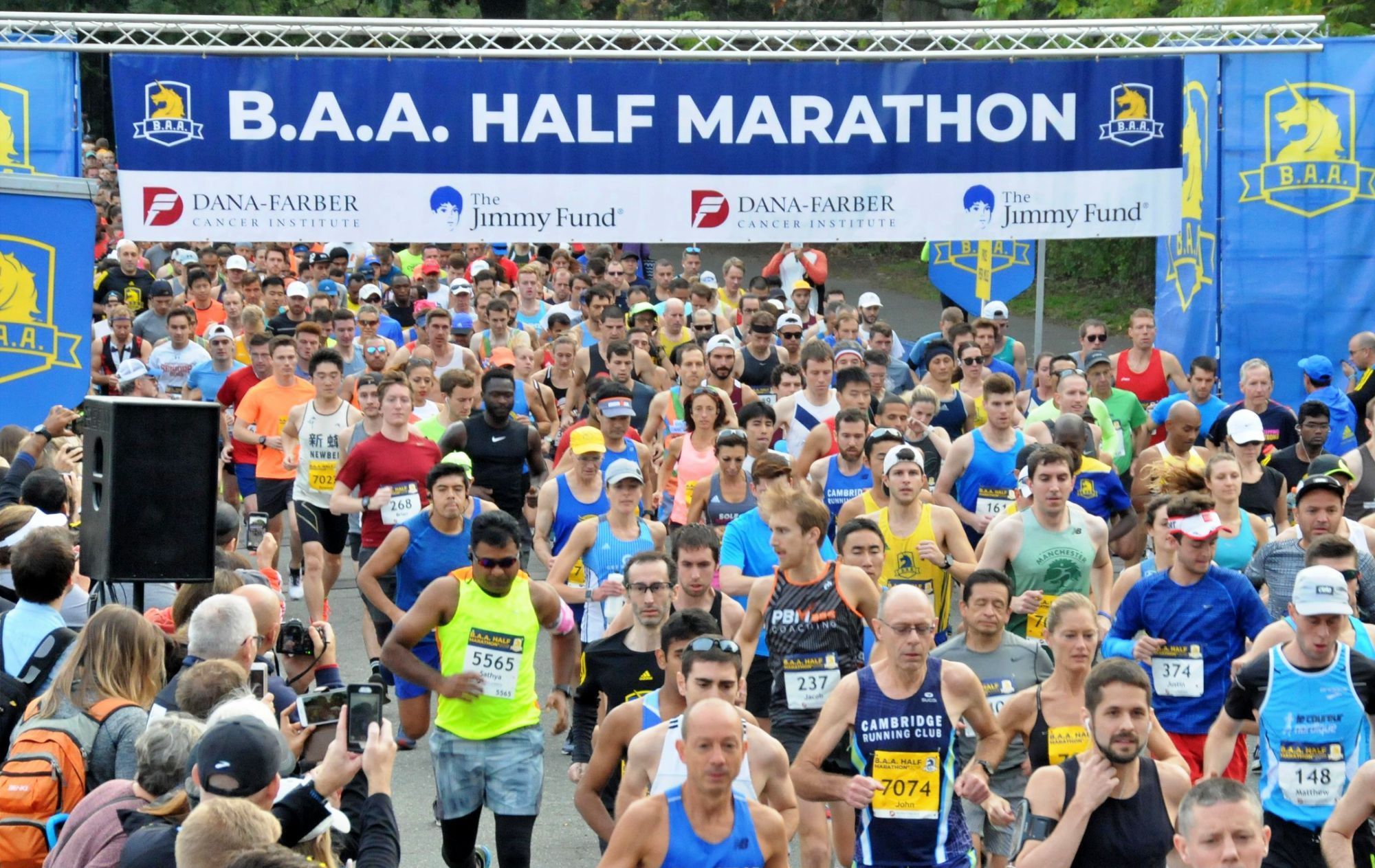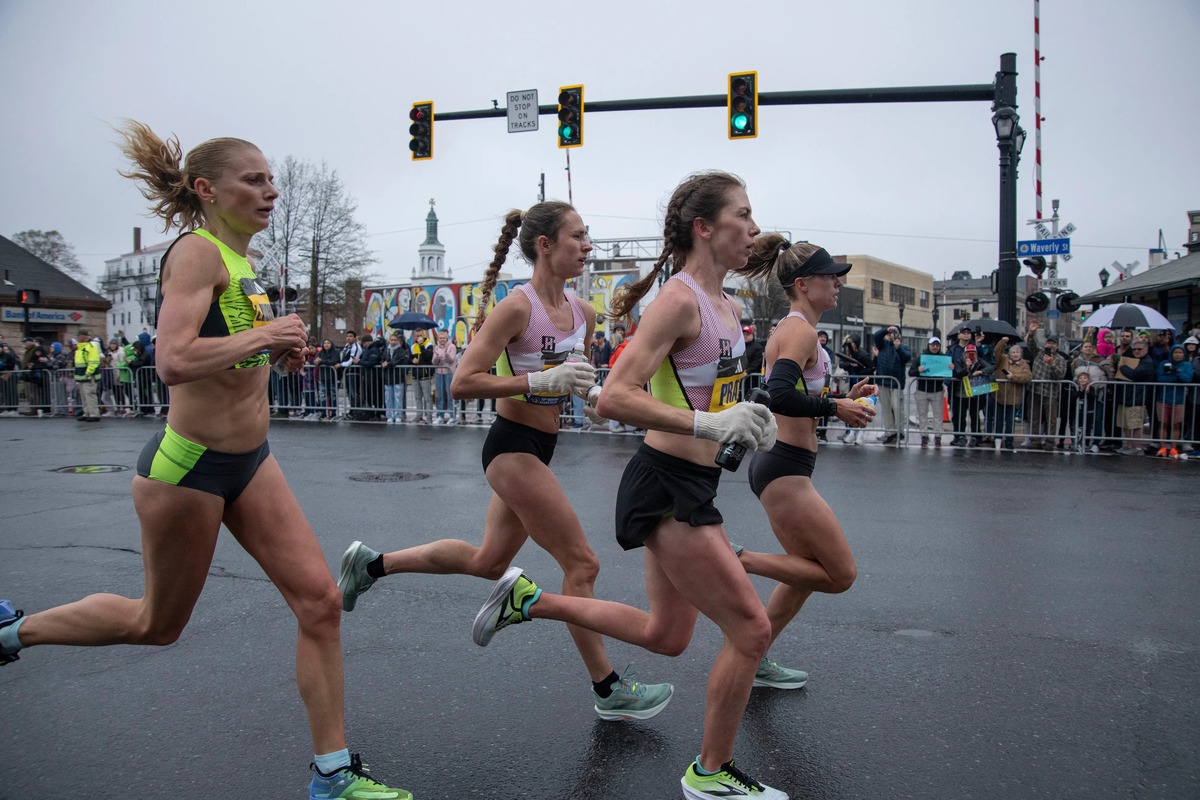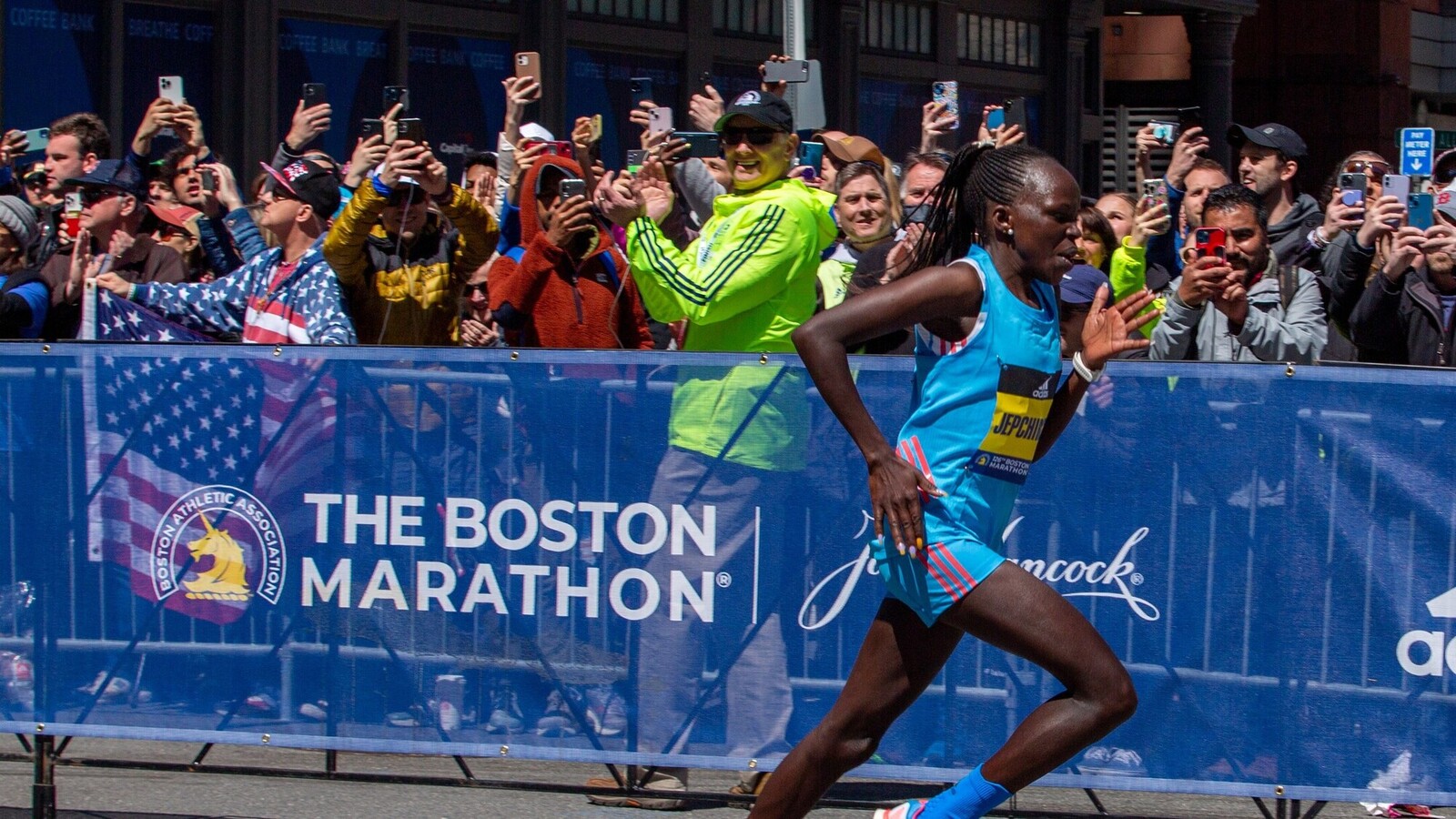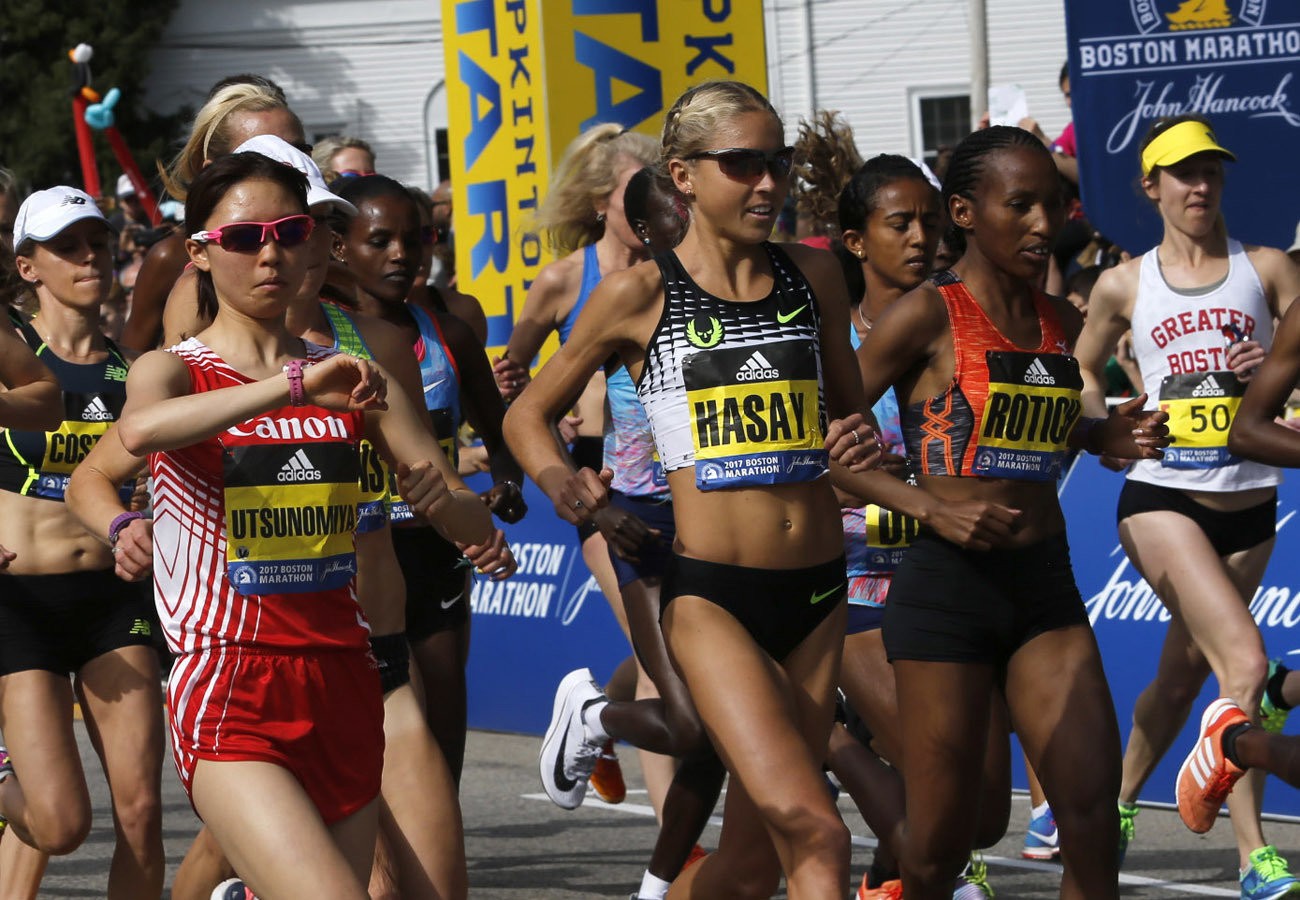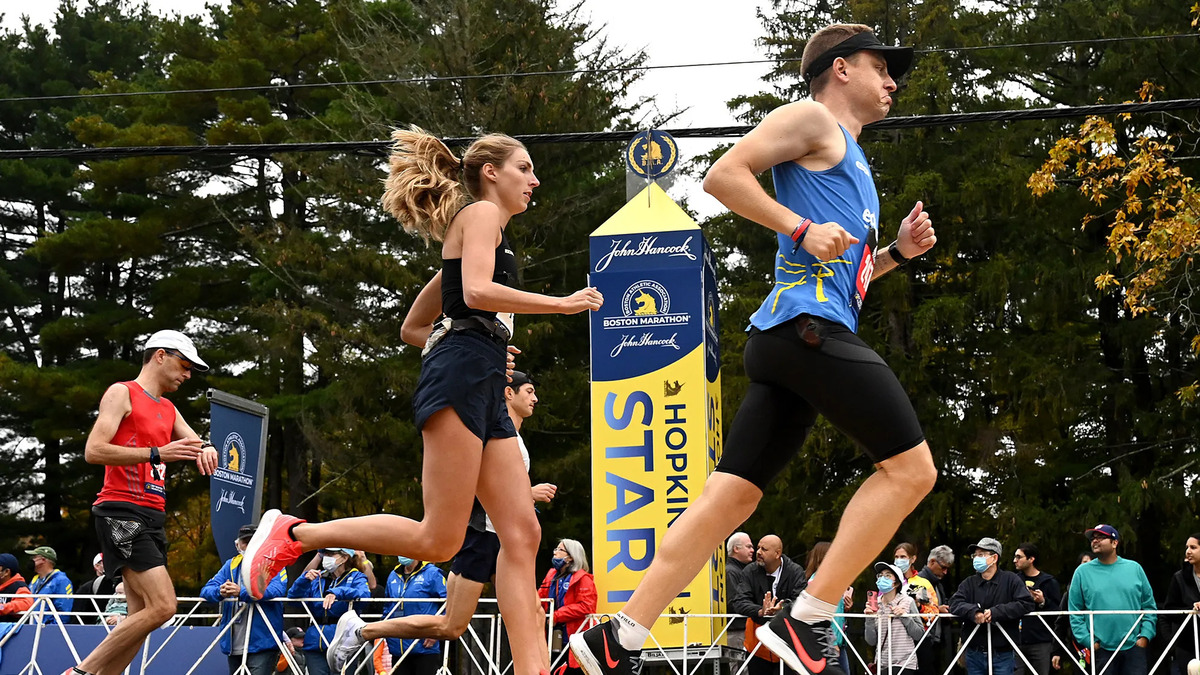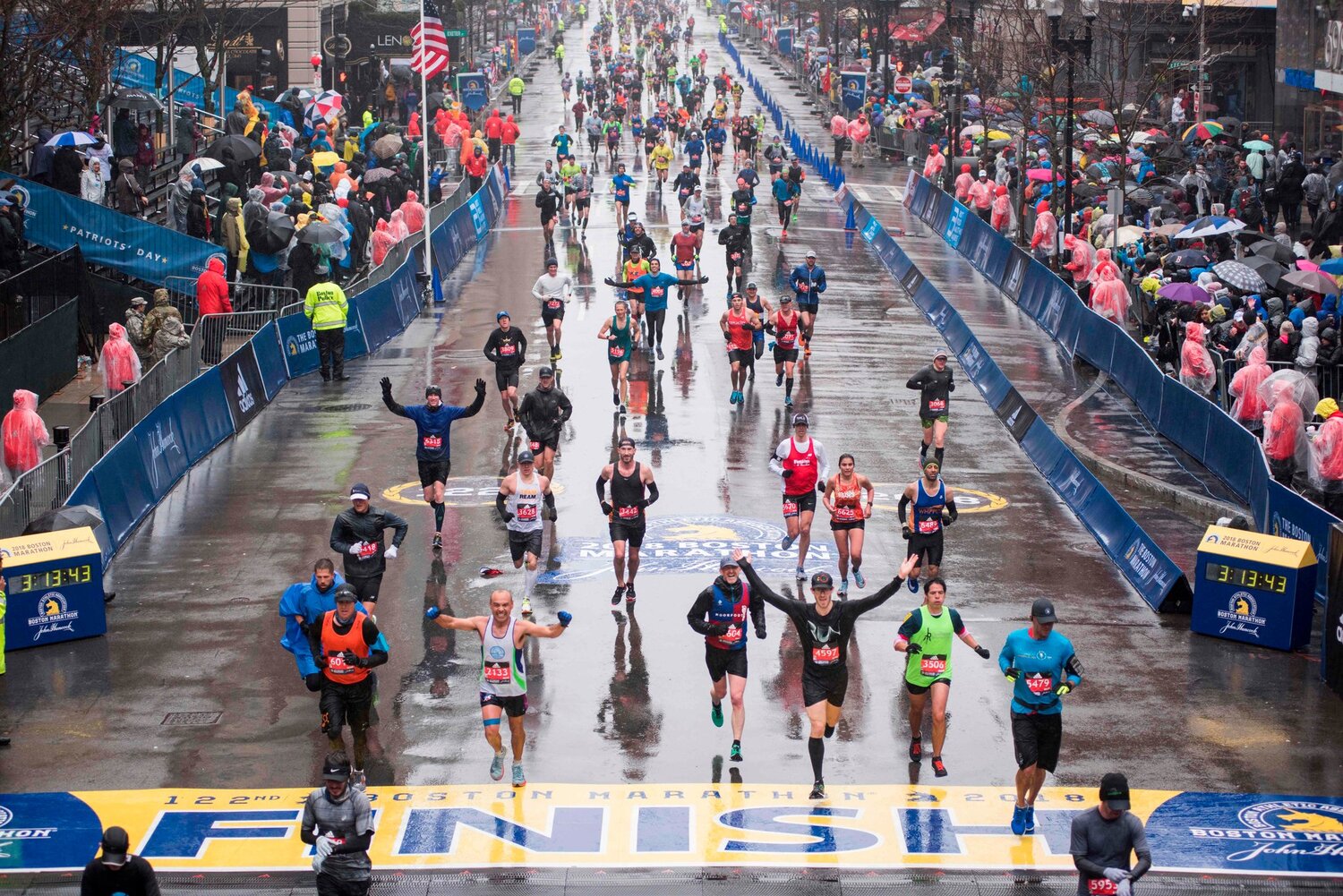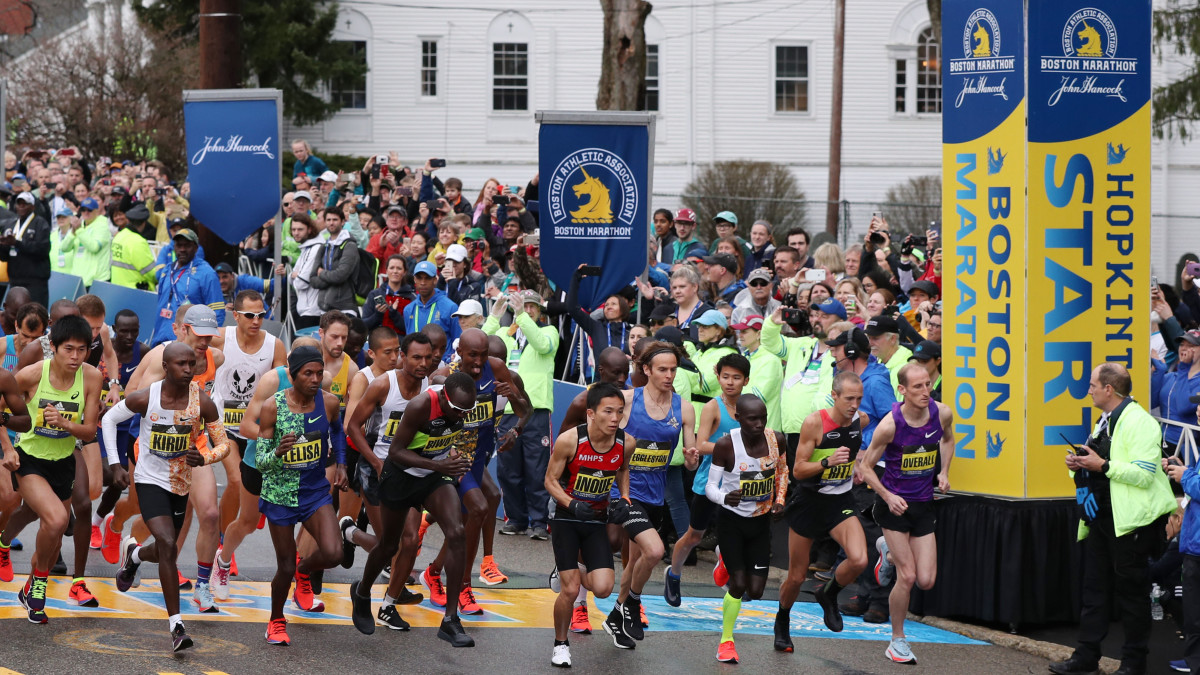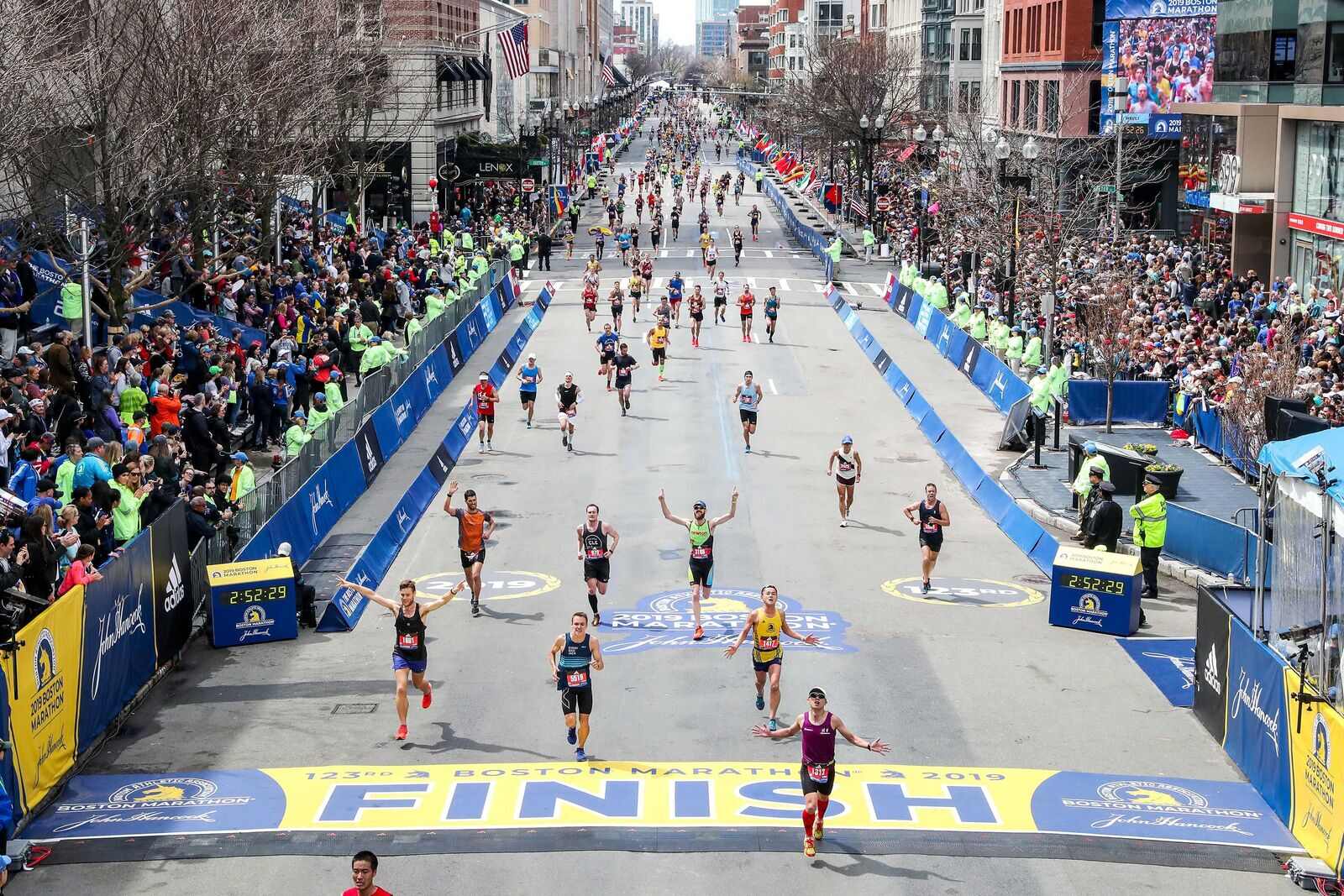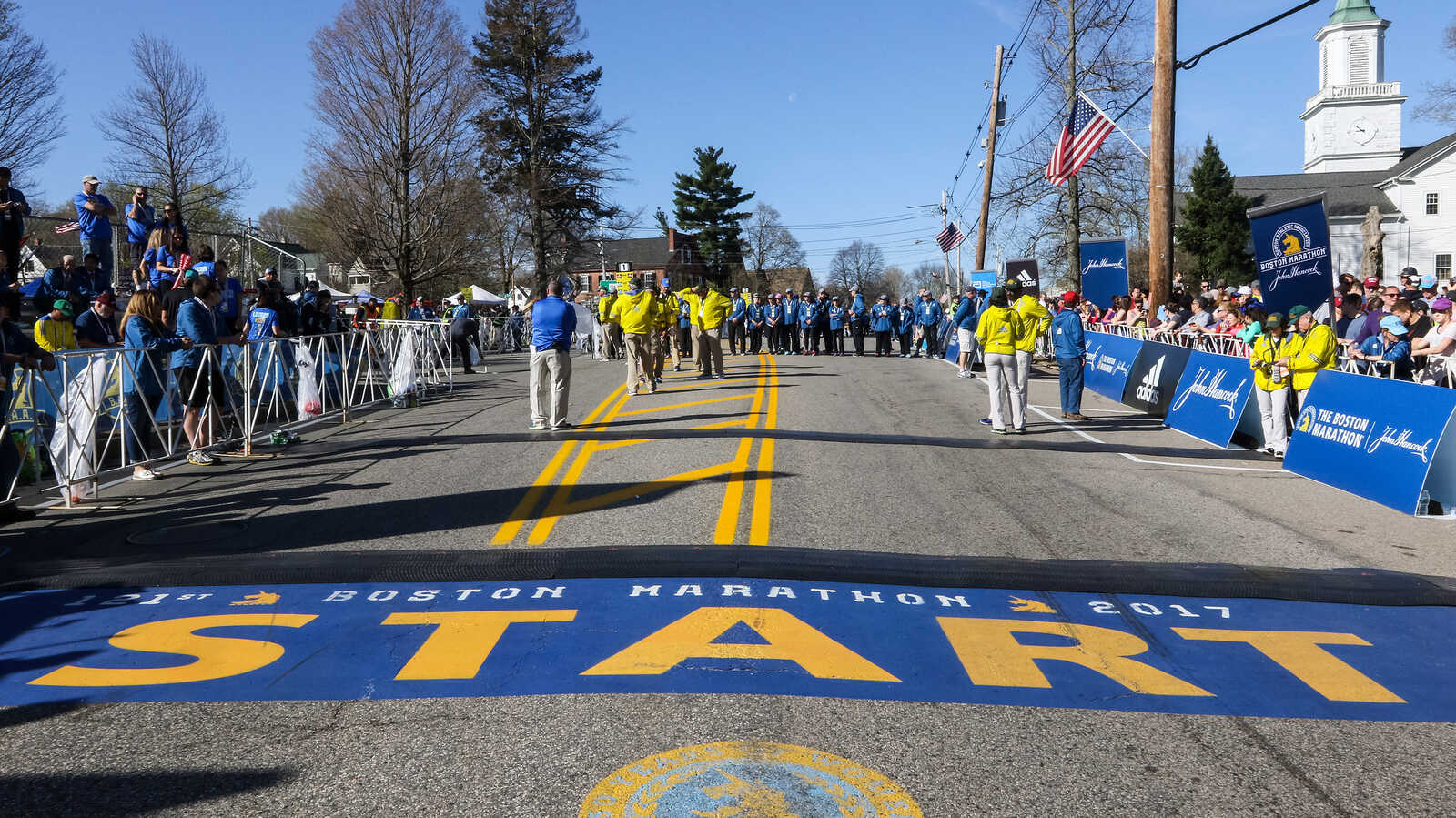

Featured
When Did The Boston Marathon Start
Modified: October 24, 2023
Discover the rich history of the Boston Marathon, including when it first started and how it has become a featured event in the running community.
History of the Boston Marathon
The Boston Marathon holds a special place in the world of long-distance running, known for its rich history and iconic status in the sporting community. The race, which takes place annually on Patriots’ Day, started as a small and local event, but has grown into one of the most prestigious marathons in the world.
The inception of the Boston Marathon can be traced back to 1897 when the race was first organized by the Boston Athletic Association (BAA). It was inspired by the success of the marathon event at the first modern Olympics held in Athens, Greece, in 1896. The original course covered a distance of 24.5 miles, starting in Ashland and finishing at the Irvington Oval in Boston.
In the early years, the Boston Marathon was a pioneering event that attracted a small group of runners looking to test their endurance. It remained an all-male race until 1967 when Kathrine Switzer defied tradition and became the first woman to officially complete the marathon. Her participation marked a significant turning point for gender equality in sports.
The race faced challenges during the World War years when it was suspended from 1917 to 1918 and again from 1941 to 1945. However, it experienced a revival in 1969 and began to gain prominence on a global scale. The Boston Marathon became a qualifying event for the Olympic Games, further enhancing its prestige and attracting elite runners from around the world.
Over the years, the Boston Marathon has witnessed remarkable moments that have etched themselves into the annals of sporting history. In 1983, the race introduced a “push rim wheelchair” division, becoming the first major marathon to include wheelchair athletes. This move transformed the perception of accessibility in the sports world and inspired the inclusion of wheelchair divisions in other marathon events.
However, the most unforgettable moment in the history of the Boston Marathon came on April 15, 2013. Two bombs exploded near the finish line, resulting in tragedy and loss. The Boston Marathon bombings claimed the lives of three spectators and injured hundreds of others. The incident deeply impacted the global running community, but it also highlighted the resilience, determination, and unity of the people of Boston.
In response to the tragedy, the city of Boston and the BAA showed unwavering resolve to continue the marathon in the face of adversity. The following year, the race saw an unprecedented display of solidarity and support as thousands of runners and spectators gathered to honor the victims and survivors.
In recent years, the Boston Marathon has undergone several developments and changes aimed at enhancing the race experience and ensuring participant safety. The BAA has implemented stricter qualifying standards, reducing the number of participants and ensuring a more competitive field. Additionally, increased security measures have been put in place to prevent any potential threats.
The Boston Marathon is not merely a race; it represents the spirit of resilience, determination, and unity. Its storied history, from its humble beginnings to its current stature as one of the most prestigious marathons, is a testament to the enduring power of human achievement in the face of challenges.
Introduction
The Boston Marathon is renowned as one of the oldest and most prestigious marathons in the world. With its rich history and iconic status, it captures the hearts and imaginations of both runners and spectators alike. Every year, on the third Monday of April, thousands of participants gather in Boston, Massachusetts, to challenge themselves and be a part of this historic event.
What sets the Boston Marathon apart from other races is not just its esteemed reputation, but also its deep-rooted traditions and remarkable milestones. From its humble beginnings to its resilience in the face of tragedy, the Boston Marathon embodies the spirit of endurance, determination, and camaraderie.
As the oldest continuously running marathon, the Boston Marathon was first held in 1897, inspired by the marathon event in the inaugural modern Olympics. Since then, it has evolved into an internationally renowned race attracting runners from all corners of the globe.
The Boston Marathon is as much a celebration of athletic achievement as it is a testament to the city’s resilience. It holds a unique place in the hearts of Bostonians, symbolizing their unwavering spirit and unity. Over the years, the race has become deeply intertwined with the city’s identity, providing a sense of tradition, pride, and community.
The marathon’s course, spanning 26.2 miles, offers runners a challenging yet scenic route, taking them through historic neighborhoods, iconic landmarks, and the enthusiastic support of cheering spectators. From the steep downhill section of “Heartbreak Hill” to the euphoric experience of crossing the finish line on Boylston Street, the course evokes a range of emotions and tests the physical and mental limits of each participant.
While the Boston Marathon has seen many triumphs, it has also endured moments of adversity that have shaped its history. The most significant of these was the tragic Boston Marathon bombings in 2013. This act of terrorism left a lasting impact not just on the race, but on the world. However, from the darkness emerged a remarkable display of unity, resilience, and strength as Bostonians and the running community came together to heal and honor the victims.
Today, the Boston Marathon represents more than just a race. It is a symbol of human perseverance, determination, and the indomitable spirit of overcoming challenges. As we delve into the history and legacy of this iconic event, we will explore its early days, its suspension during the World Wars, its revival and growth, and the notable moments that have shaped its story.
Early Days of the Race
The roots of the Boston Marathon can be traced back to the late 19th century when the idea of organizing a marathon race in the United States began to take shape. In 1896, the first modern Olympic Games were held in Athens, Greece, and the marathon event captured the attention of sports enthusiasts worldwide. Inspired by the success of the Olympic marathon, the Boston Athletic Association (BAA) decided to organize a marathon in Boston.
On April 19, 1897, the inaugural Boston Marathon took place with a field of just 15 participants. The race covered a distance of 24.5 miles, starting in Ashland and finishing at the Irvington Oval in Boston. John J. McDermott, a local runner from New York, emerged as the victor with a time of 2 hours, 55 minutes, and 10 seconds.
Throughout the early years of the race, it remained a local event, primarily attracting participants from the New England area. The course was gradually lengthened to match the standard marathon distance of 26.2 miles in 1908. The iconic route continued to evolve over time, incorporating various sections of suburban and urban Boston.
The Boston Marathon gained popularity and recognition, drawing in more runners from different parts of the country. In 1901, the race introduced prize money for the winners, encouraging elite athletes to join in the pursuit of victory. The first overseas competitor in the Boston Marathon was Johnny Hayes of the United States, who returned from the 1908 London Olympics with a gold medal in the marathon event.
During these early years, the marathon served as a showcase for technological advancements in sports. In 1904, the Boston Marathon became the first race to use recorded times and intervals as a means of tracking the progress of runners. This innovation was later adopted by other marathons and sporting events, revolutionizing the way races were organized and results were measured.
Despite its growing popularity, the Boston Marathon initially remained an all-male race, with women prohibited from participating. This would change in 1967 when Kathrine Switzer, registered under the initials “K.V. Switzer,” became the first woman to officially run the race. Her bold act challenged conventional norms and paved the way for women to compete in marathons around the world.
The early days of the Boston Marathon set the foundation for the race’s enduring legacy. From its modest beginnings with a handful of participants to its gradual evolution into a prestigious event, the marathon grew in stature and significance. It provided a platform for runners to showcase their talent and determination, and it captured the imagination of sports enthusiasts worldwide.
Suspension During World War Years
Like many other events and activities during times of conflict, the Boston Marathon faced disruption and suspension during the years of the two world wars. The race, which had been growing in popularity and prestige, had to make way for the greater priorities of the nation and the world.
In 1917, just a few weeks after the United States entered World War I, the Boston Marathon was canceled. With the country now focused on the war effort, it was deemed necessary to suspend the race to conserve resources and allow individuals to contribute to the war in other ways. The suspension extended into 1918 as the war continued to rage, and the world was engulfed in unprecedented turmoil.
Following the end of World War I, the Boston Marathon made a comeback in 1919. The race was met with great enthusiasm and became a symbol of resilience and normalcy in the aftermath of the war. The return of the race provided a sense of hope and unity, as people celebrated the end of a dark period in history.
However, the resumption of the Boston Marathon would once again be short-lived. With the outbreak of World War II in 1939, the race was suspended once more. From 1941 to 1945, the marathon was put on hold as the entire world was consumed by the war. The focus shifted to supporting the war effort, and organizing a sporting event became an impractical endeavor in the face of global conflict.
During this period, many athletes, including some of the most talented runners, enlisted in the military to serve their country. Their dedication and sacrifice extended beyond the marathon and into the battlefield, as they fought for the freedom and values that the race symbolized.
After the war came to an end in 1945, the Boston Marathon resumed in 1946. The race served as a rallying point for a nation recovering from the devastating effects of war, providing a much-needed sense of unity and renewal. Runners from around the world returned, eager to compete and showcase their abilities once again.
The suspension of the Boston Marathon during the World War years was a testament to the upheaval and uncertainty that marked those tumultuous times. However, it also highlighted the enduring spirit of resilience and determination. Despite facing several interruptions, the marathon managed to rebound, demonstrating its significance not only as an athletic event but also as a symbol of hope and perseverance.
Revival and Growth
After the challenging years of World War II, the Boston Marathon experienced a revival that would shape its future growth and cement its reputation as one of the world’s most prestigious races. The post-war era brought new opportunities and a renewed sense of enthusiasm as the marathon sought to reclaim its position on the global stage.
The revival of the Boston Marathon in 1946 was met with great anticipation and excitement. Runners from around the world returned to Boston, eager to compete and showcase their abilities. Spectators lined the streets, cheering on the participants and celebrating the race’s return after a five-year hiatus caused by the war.
As the race regained momentum, the Boston Athletic Association (BAA) sought to establish it as a leading marathon event. In 1951, the BAA implemented the first qualifying standards, requiring participants to meet certain time requirements in officially recognized marathons. This move ensured that the Boston Marathon attracted top-tier athletes and maintained a highly competitive field.
The 1960s marked a significant turning point for the race, as the Boston Marathon expanded its reach and became a global attraction. In 1966, the Englishman Roberta “Bobbi” Gibb became the first woman to unofficially complete the race, running without an official bib number. Her groundbreaking feat challenged the prevailing belief that women were not physically capable of running long distances and paved the way for future female participation.
The following year, Kathrine Switzer gained worldwide attention when she officially registered for the race using her initials, “K.V. Switzer.” Despite attempts to forcibly remove her from the course, Switzer persevered and completed the race. Switzer’s defiant act brought significant attention to the fight for gender equality in sports and set the stage for women to compete in marathons globally.
During the 1970s and 1980s, the Boston Marathon experienced exponential growth in popularity and participation. The iconic course, challenging yet rewarding, continued to attract runners from all over the world. Additionally, the evolution of media coverage allowed the race to be broadcasted live, exposing it to a wider audience and enhancing its global stature.
With its growing prominence, the Boston Marathon became a prestigious event for elite runners. In 1969, the race established itself as a qualifying event for the Olympics, further solidifying its status as a premier marathon. This move attracted top athletes, ensuring a high level of competition and adding to the race’s allure.
Thanks to the continuous efforts of the BAA and the marathon’s participants and supporters, the Boston Marathon experienced unprecedented growth in the late 20th century and beyond. The number of participants increased, creating a greater sense of unity among the running community.
As the race grew in popularity and stature, the BAA implemented stricter qualifying standards in 2012, making it even more competitive to participate. The new standards aimed to maintain the race’s elite field while accommodating the increasing number of applicants.
The revival and growth of the Boston Marathon not only reinforced its status as a world-class race but also marked a pivotal moment in its history. From its humble origins to its revitalization, the marathon’s larger-than-life reputation was solidified, ensuring its place as a staple in the world of long-distance running.
Notable Moments in Race History
Throughout its storied history, the Boston Marathon has been the stage for numerous notable moments that have left an indelible mark on the race and the world of long-distance running. From record-breaking achievements to acts of resilience and triumph, these moments have shaped the marathon’s narrative and contributed to its enduring legacy.
One of the most iconic moments in Boston Marathon history occurred in 1967 when Kathrine Switzer became the first woman to officially register and complete the race. Despite resistance and attempts to remove her from the course, Switzer defied convention and proved that women were capable of running the grueling 26.2-mile distance. Her groundbreaking feat shattered gender barriers and paved the way for equality in women’s participation in marathons.
The 1975 Boston Marathon witnessed an epic duel between Bill Rodgers and Samson Mungai. The two athletes went neck and neck for much of the race, alternating the lead. In the final few miles, Rodgers surged ahead, emerging as the victor in what has been hailed as one of the most thrilling finishes in marathon history. Rodgers went on to become a dominant force in distance running, winning the Boston Marathon a total of four times.
The 1983 race introduced a new chapter for the Boston Marathon with the inclusion of a “push rim wheelchair” division. Rick Hoyt, a young man with cerebral palsy, was pushed by his father, Dick Hoyt, in a specially designed wheelchair. Their participation sparked a revolution in the world of adaptive sports, inspiring the inclusion of wheelchair divisions in marathons worldwide. The Hoyts’ enduring partnership and their commitment to breaking barriers have left an indelible mark on the Boston Marathon and beyond.
In 1984, Geoff Smith and Alberto Salazar engaged in a dramatic battle for victory. The race unfolded with Smith, a British runner, leading for much of the course. However, Salazar surged in the final stretch, pushing himself to the limit. In a gripping finish, Salazar overtook Smith just yards from the finish line, edging out a narrow victory. The emotional and fiercely competitive race highlighted the determination and resilience of these elite athletes.
A defining moment in the race’s history occurred during the 2013 Boston Marathon when tragedy struck. Two bombs exploded near the finish line, resulting in the loss of three lives and countless injuries. The attack shocked the world and temporarily cast a shadow over the marathon. However, the response of the Boston community and the global running community exemplified the resilience and spirit of unity. The following year, the race became a symbol of strength and triumph as thousands of runners and spectators defiantly returned to the streets of Boston, showcasing their unwavering resolve.
Notable moments in the Boston Marathon’s history transcend athletic achievements. They embody the triumph of the human spirit, break down societal barriers, and demonstrate the power of perseverance in the face of adversity. From moments of groundbreaking inclusivity and fierce competition to acts of resilience and unity, these moments have shaped the marathon’s legacy, making it much more than just a sporting event.
Instantly Iconic: The Boston Marathon Bombings
The Boston Marathon bombings on April 15, 2013, are etched in the collective memory as a tragic and defining moment in the race’s history. What was meant to be a day of celebration and triumph turned into a day of chaos and devastation. The bombings near the finish line of the marathon shocked the world and forever changed the narrative of this iconic event.
The bombings occurred when two pressure cooker bombs exploded within seconds of each other, killing three innocent bystanders and injuring more than 260 people. The immediate aftermath was filled with confusion, panic, and grief as the full extent of the tragedy became known.
While the Boston Marathon bombings were a heart-wrenching and senseless act of violence, they also showcased the resilience and strength of the human spirit. In the wake of the attack, the city of Boston and the global running community came together to support the victims and their families, and to send a powerful message of unity and defiance to those who sought to instill fear.
One of the most powerful images to emerge from the tragedy was that of the runners. Instead of running away from danger, they ran toward it, assisting the injured and offering comfort and aid. Their selfless acts of compassion and heroism became symbols of the indomitable spirit of the marathon and the human capacity to face adversity with courage.
The response from the Boston community and the worldwide running community was nothing short of extraordinary. In the days and weeks following the bombings, vigils, fundraisers, and acts of kindness prevailed as the city remained united in the face of tragedy. The hashtag #BostonStrong became a rallying cry, representing the resilience and determination of the people of Boston.
The following year, the Boston Marathon was held again, and it became an emblem of triumph over terror. The race saw an unprecedented outpouring of support and solidarity, with increased security measures in place to ensure the safety of participants and spectators. As runners crossed the finish line on Boylston Street, their determination and resilience resonated stronger than ever.
The Boston Marathon bombings have left a lasting impact on the marathon and the running community, forever changing the way the race is perceived and experienced. It serves as a reminder of the need for increased security measures in all major sporting events and a testament to the strength of spirit in the face of adversity. The bombings also reinforced the significance of the Boston Marathon as a symbol of endurance, unity, and the unwavering human spirit.
Recent Developments and Changes
In recent years, the Boston Marathon has undergone several key developments and changes aimed at enhancing the race experience and ensuring participant safety. The Boston Athletic Association (BAA) and race organizers have implemented new measures to adapt to the evolving landscape of marathons and address emerging challenges.
One significant development in recent years is the stricter qualification standards for the Boston Marathon. In 2012, the BAA revised the qualifying times, making them more stringent. These new standards ensure that the race maintains its competitive field while accommodating the increasing number of applicants. Runners now need to achieve faster times in order to earn a spot in the prestigious race, making the qualification process more challenging.
Participant safety has always been a top priority for the Boston Marathon, and recent developments have focused on enhancing security measures. Following the 2013 bombings, the race implemented heightened security protocols, including increased police presence, surveillance systems, and stricter bag restrictions. The goal is to provide a secure environment for runners and spectators, ensuring that the marathon remains a safe and enjoyable experience.
Technology has also played a significant role in recent developments. The Boston Marathon has embraced digital innovation to improve the race experience for participants and spectators. Race tracking systems allow friends, family, and fans to follow the progress of their loved ones in real-time, while live streaming and online coverage provide a broader audience with the opportunity to witness the excitement of the race from anywhere in the world.
Another change in recent years has been the focus on inclusivity and diversity in the race. The BAA has made efforts to increase opportunities for underrepresented groups, such as expanding the field size and implementing new initiatives to encourage participation from diverse communities. This commitment to inclusivity helps to foster a sense of belonging and equality within the Boston Marathon, reflecting the spirit of the race.
Environmental sustainability has been another area of growth and change for the Boston Marathon. In recent years, the race has taken steps to reduce its carbon footprint and promote eco-friendly practices. Initiatives such as waste reduction, recycling programs, and the use of renewable energy sources aim to minimize the race’s impact on the environment and set an example for other sporting events.
Furthermore, the Boston Marathon has embraced a more interactive and engaging experience for participants and spectators. The race has incorporated social media platforms, mobile apps, and interactive elements along the course to create a more immersive and connected event. This allows for a stronger connection between runners, spectators, and the overall Boston Marathon community.
Recent developments and changes reflect the ongoing commitment of the Boston Marathon to evolve and adapt to the needs and expectations of runners and the global racing community. Stricter qualifications, improved security measures, technological advancements, inclusivity initiatives, sustainability efforts, and enhanced interactivity all contribute to the continuous growth and advancement of this iconic race.
